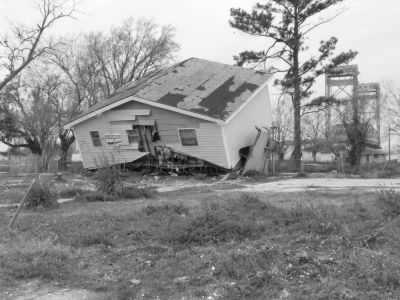What was understood by analyzing the data on "How many people will be more likely to be reported as a result of natural disasters?"

byLiza Shoning-Young
When a large-scale natural disaster occurs, each press reports on the misery of the disaster that occurred as news. Research data on natural disasters in such news "Never fair things" research data, publish various research dataOur World in DataIt is announced in.
Not all deaths are equal: How many deaths make a natural disaster newsworthy? - Our World in Data
https://ourworldindata.org/how-many-deaths-make-a-natural-disaster-newsworthy
The question, "How many people will be more likely to be reported as a result of natural disasters?" Is the question of researchers'Thomas EisenyaWith Mr.David StromburgBy Mr. 2(PDF file)What was investigated. The two are American major news organizations (ABC News·CBS·NBC·CNNTo analyze the impact of media coverage on natural disasters, we analyzed 5000 disasters and 700 thousand news dealt with by major media organizations between 1968 and 2002. As a result, it became clear that the type of disaster and the area where it occurred had a big influence on the reporting volume, and the amount of the report was not influenced only by the fact that "a lot of people died."
The image below shows how the breakdown of news related to 700,000 natural disasters was made, 33% coverage of "earthquake", 30% coverage of "volcano", "fire "And" typhoon "report 14%, followed by" flood "9%. Compared with 33% of the earthquake, "starvation" is 3%, "epidemic disease" is 2% and the proportion of the news as a whole is very small. A visual and flashy disaster such as an earthquake, a volcanic eruption, or a hurricane is thought to be a disaster that brings to the top of the page, and it seems that nature and the volume of coverage will increase as well.

Meanwhile, Mr. Eisensey and Mr. Stromberg are also paying attention to "Is there a difference between the number of deaths due to disasters and actual news reports?" They categorized the number of people who died and the type of disaster and graphed the analysis results compared by the reporting volume of major news organizations.
In the figure below, you can see that the reporting volume when there is one person who died from the volcanic eruption is about the same as the reporting volume when about 40,000 people died from hunger. At the same time, in disasters that can not be visualized, such as "cold waves", "droughts", "infectious diseases", it is clear that the volume of news does not increase unless a considerable number of people died .

Disasters such as volcanic eruptions, unexpected earthquakes, and typhoons will spread quickly and cause damage to people, but disasters such as hunger and drought will slowly progress, so if it is reported heavily it will stop the damage There is a possibility that a human hand intervenes. However, it is said that hunger and drought are not a disaster that suddenly gives huge damage, but because of the "lack of impact" nature that it progresses slowly, it is difficult to attract media attention.
In addition, Mr. Eisensey and Mr. Stromberg have also sponsored a research spot on "Difference in coverage by areas where disasters occurred", and the major media organizations in the United States had disasters in Europe and Central and South America excluding North America I found out that I was spending a lot of coverage on the report. The disasters in Europe and Latin America account for 18% of the total coverage of disasters, and it seems that the United States has also gained attention as it is.
However, disasters occurred in Africa and the Pacific region were reported only by 4% and 3%, respectively, and it turned out that there was a big difference in the reporting volume even in the same non-US region. Converting to the number of people who died due to the disaster, "In order to match the disaster occurred in Africa to the disaster occurred in Europe by the report volume, the number of people who died in the disaster of Europe 45 times as many as the disasters occurred in Africa It is necessary to pass away by "It is said to be the calculation result.

The above result implies that in addition to the geographical elements such as the distance between the United States and Africa, disasters occurred in Africa are "lacking visual impact" such as hunger and drought. It seems necessary to keep in mind that the media's disaster report is biased by the "news impact".
Related Posts:
in Note, Posted by log1h_ik







